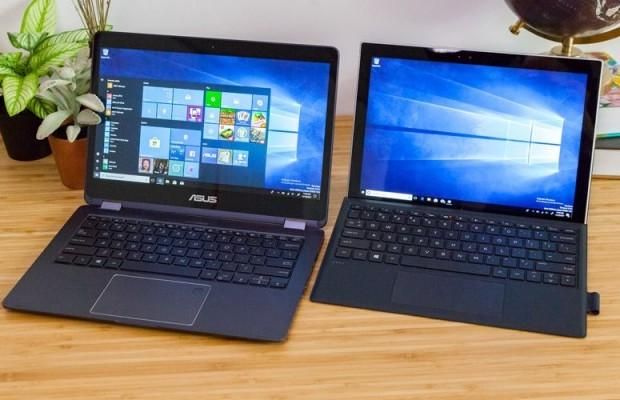Here's What Windows 10 on ARM Can't Do
Microsoft and Qualcomm have told us that Windows 10 on ARM processors, including the upcoming laptops featuring the latter company's Snapdragon 835 processors, would be functionally identical to those on Intel processors.
For the most part, the upcoming devices from Asus, HP and Lenovo will work as you expect, but a document that Microsoft released -- then quietly pulled over the weekend -- does suggest a few limitations for Windows 10 on ARM. Thurrott found the original document, though now you can only find a cached version.
For starters, only ARM64 drivers are supported. While Windows 10 on ARM will be able to emulate x86 apps, you'll need ARM drivers to make them work. For most modern hardware and peripherals, this isn't an issue. But if you have a favorite mouse from 1994 that you still use, that likely won't work.
Additionally, x64 apps (the 64-bit version of apps coded for Intel'x x86 platform) won't work.
Some games won't work. If they use a version of OpenGL later than 1.1 or require hardware-accelerated OpenGL, they won't run. In addition, games that need anti-cheating drivers won't work on Windows 10 on ARM. This probably isn't much of an issue, as the first systems don't have the discrete GPUs you'll need to play games.
Some apps just won't run, either. Specifically, anything that modifies Windows 10, including assistive technologies and cloud storage apps like Dropbox. These will need to be recompiled for Windows 10 on ARM, so it may be awhile until these apps are available.
Perhaps the funniest of the limitations is apps that were originally designed for Windows 10 Mobile may work incorrectly. Considering that Windows 10 Mobile only runs on ARM processors, this incompatibility is a little ironic.
Sign up to receive The Snapshot, a free special dispatch from Laptop Mag, in your inbox.
Finally, Windows 10 on ARM won't support the Windows Hypervisor Platform, so you won't be able to run virtual machines on Hyper-V.
Based on the use-cases Qualcomm and Microsoft have told us about, these limitations don't sound so bad. The majority of commons scenarios should work without a hitch, with most programs and workflows going unaffected. Power users with old peripherals running virtual machines are out of luck, but those looking for simple workhorses with over 20 hours of battery life should be OK. We haven't gotten to test out a Snapdragon-based Windows 10 machine yet, but we'll report back with full reviews and details once we have.
Windows 10 Annoyances and Problems
- Repair Windows 10
- Remove the Lock Screen
- Disable or Enable Grayscale Mode
- Set Compatibility Mode for Apps
- Access the BIOS on a Windows 10 PC
- Stop Windows Update from Automatically Restarting Your PC
- Turn Off App Notifications
- Fix a Slow-Opening Windows Downloads Folder
- Disable Personalized Ads on Microsoft Sites and Apps
- Stop Skype’s Annoying Auto Updates
- Fix a 'Boot Configuration Data File is Missing' Error
- Clear the Run Command's History
- Disable Cortana
- Uninstall and Restore Built-in Apps
- Restore a Missing Battery Icon
- Fix a Boot Configuration File Error
- Get to the Advanced Startup Options Menu
- Delete a Locked File
- Restart without Rebooting
- Roll Back Windows 10 to an Earlier Version
- Disable Automatic Driver Downloads
- Disable Internet Explorer
- Pause Windows Updates for Up to 35 Days
- Use Battery Saver
- Downgrade to Windows 10 S
- Save Netflix Videos for Offline Viewing
- All Windows 10 Tips
- Worst Windows 10 Annoyances
- Disable Password Prompt on Wake
Andrew is a contributing writer at Laptop Mag. His main focus lies in helpful how-to guides and laptop reviews, including Asus, Microsoft Surface, Samsung Chromebook, and Dell. He has also dabbled in peripherals, including webcams and docking stations. His work has also appeared in Tom's Hardware, Tom's Guide, PCMag, Kotaku, and Complex. He fondly remembers his first computer: a Gateway that still lives in a spare room in his parents' home, albeit without an internet connection. When he’s not writing about tech, you can find him playing video games, checking social media and waiting for the next Marvel movie.

